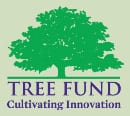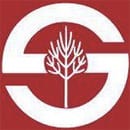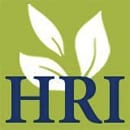Having an inventory is essential to developing a master plan to promote the long term health of the community forest and maximize the benefits it provides. Hiring an experienced certified arborist is the best way to ensure that accurate data is collected.
Using the Street Tree Inventory
A street tree inventory defines the current state of the community forest and is used as a benchmark in the master planning process. Once the community forest’s current state is established with an inventory, the following information can be extracted from it to formulate goals for the master plan. This information includes:
Species distribution – The percentage of each tree species (i.e. how many Sugar Maples, Red Oaks, Honey Locusts, etc.) in relation to all community trees.
Importance to Master Plan
- Species diversity encourages the long term health and sustainability of the community forest and your master plan may state “do not choose trees from any species comprising more than “x”% of the community forest.”
- A limit of 5 to 10% of any species is frequently set as a goal and, in this case, there would be a moratorium on planting trees of any species comprising more than 5 to 10% of the street tree population.
- Response to threats from invasive pests i.e. we would recommend that species at risk from an aggressive and lethal pest not be planted.
Genus Distribution – The percentage of each tree genus (i.e. how many Maples, Oaks, Lindens, etc.) in relation to all community trees.
Importance to Master Plan
- Similar to species diversity, genus diversity encourages the long term health and sustainability of the community forest and your master plan may state “do not choose trees from any genus comprising more than “x”% of the community forest.”
- A limit of 10 to 20% of any genus is frequently set as a goal and, in this case, there would be a moratorium on planting trees of any genus comprising more than 10 to 20% of the street tree population.
Size class distribution – The proportion of trees by size (i.e. their relative age).
Importance to Master Plan
- To optimize the value and benefit of trees, the community forest should have a high percentage of large canopy trees (note: large canopy trees mean large trunk diameters measured by DBH, diameter at breast height). In general, the older and larger the trees, the more benefits provided.
- At the same time, there must be a sufficient number of younger, smaller trees in the street tree population to account for the loss of trees over time and thereby maintain a sustainable community forest.
- If you are planting trees regularly, the trend line should be relatively even, tapering off at the larger (older) sizes (see graph below).
- If your inventory shows few small diameter trees (see graph below), your master plan may state “concentrate on planting new trees until size classes even off”.
- If your inventory shows few larger diameter trees, you may need to plant more trees that mature at larger sizes and your master plan may state “concentrate on planting trees from larger maturing tree species.”
Tree Condition – The percentage of good, fair, poor and dead trees.
Importance to Master Plan
- Once the dead, poor, and fair condition trees are identified, an arborist can assess which trees need to be removed first and provide an estimate of the cost.
- If your inventory shows a high percentage of dead and poor trees, you may have to budget more for removals relative to pruning in the first few years.
- If certain species routinely fall in the poor category, those species should not be planted in the future.
Stocking Level – The proportion of existing street trees to the total number of potential street trees (number of trees plus the number of available planting spaces).
Importance to Master Plan
- For a small community, a 75 – 80% stocking level would be an excellent goal (a 60% stocking level is the national average).
- When planning your annual budget, consider these three factors:
- How many trees must be removed?
- How many trees can you afford to plant? Note: to increase stocking level, the number planted must be greater than the number removed.
- Based on the amount that planting exceeds removal, on an annual basis, how long will it take to reach your stocking level goal?
- Your master plan may state, “increase percent stocking by “x”% in five years.” Your community’s budget will determine how much you can increase the number of trees, perhaps by 2 to 10%.
Tree Planting – A list of available planting sites.
Importance to Master Plan
- Your community may set priorities for choosing planting sites based on:
- Streets without shade
- Residential areas near commercial or business districts
- People that want a tree. Note: you can send a letter to potential homes with planting sites. State that they have been identified as a planting site and should call if they have questions. After planting, follow-up with property owner by giving the name of tree and care instructions.
- Your master plan may state, “planting sites prioritized by: (1) streets with little shade (2) streets near business districts (3) homes with people that want and will help maintain newly planted trees (4) streets without utility wire conflicts.”
Inventory Methodology
Data can be collected in a walking survey utilizing handheld devices equipped with the US Forest Service i-Tree utility. i-Tree is a free software available to the public and developed and maintained by the U.S. Forest Service. See about i-Tree and i-Tree streets. There are other tree inventory and urban forest management software developed privately that are available for purchase.
Data collected may include the following:
(1) Tree Location: Locations for right-of-way trees and right-of-way planting sites are established primarily by property address. If an address is unavailable, a location is assigned based upon the next sequential address. Site numbers are assigned for trees and planting spaces at each address. For addresses with multiple trees and/or planting spaces, site numbers are assigned from left to right facing the property. Trees and planting spaces located at street corners are assigned the property address, but if located on a side street different than the property street address, a notation for “side” is made. Locations for park trees are established primarily by GPS coordinates (see below).
(2) GPS: Latitude (Y) and Longitude (X) for right-of-way trees, right-of-way planting sites, and park trees are collected with handheld GPS (Global Positioning System). Coordinates for right-of-way trees and planting sites are corrected after the inventory to approximate more accurately addresses based on a parcel shapefile typically supplied by the county GIS Department. Coordinates for park trees are not generally corrected.
(3) Location Site: Placement of trees and planting sites is assessed by one of five ratings: 1= front yard or lawn; 2 = treelawn planting strip less than four feet wide; 3 = treelawn planting strip greater than four feet wide; 4 = sidewalk tree pit; 5 = street median.
(4) Species: Trees are identified and assigned their respective botanical names. Common names are added subsequent to the inventory.
(5) DBH: Trunk diameter at breast height (approximately 4.5 feet above the ground) is rounded to the nearest inch. DBH is the most commonly used measure of tree size and age. It is not an absolute measure, however, as relationships between DBH and canopy spread or DBH and tree age vary by species.
(6) Condition Wood: The health of a tree’s wood (its structural health) is assessed by one of four ratings: 1= Dead or Dying – extreme problems; 2 = Poor – major problems; 3 = Fair – minor problems; 4 = Good – no apparent problems.
(7) Condition Leaves: The health of a tree’s leaves (its functional health) is assessed by one of four ratings: 1= Dead or Dying – extreme problems; 2 = Poor – major problems; 3 = Fair – minor problems; 4 = Good – no apparent problems.
(8) Percent Deadwood: “Deadwood” refers to branches that are dead, dying, or diseased. The percentage of deadwood in the tree canopy is assessed by one of five ratings: 1= less than 10%; 2 = 10 to 25%; 3 = 25 to 50%; 4 = 50 to 75%; 5 = greater than 75%.
(9) Maintenance Recommendation: Tree maintenance needs are assessed by one of four ratings: 1= None – no maintenance necessary; 2 = Train – routine maintenance for a young tree; 3 = Routine Prune – routine maintenance of a mature tree; 4 = High Priority Prune – a tree requiring immediate maintenance.
(10) Consult Needed: Based on the condition of the tree, an assessment is made as to whether a certified arborist should be brought in to examine the tree.
(11) Sidewalk Damage: The presence or absence of damage associated with tree roots where the sidewalk was heaved at least ¾ inch is noted.
(12) Wire Conflict: The presence or absence of single or triple phase overhead utility wires is noted.
Updating and Maintaining the Inventory
Conducting a street tree inventory is essential to developing a community forest master plan, a critical component in maintaining a healthy community forest and facilitating a future sustainable one. The inventory once completed, however, is but a snapshot of a moment in time. The community forest is continually changing as existing trees are pruned and removed, and new trees are planted. The usefulness of the inventory, therefore, depends to a large degree on keeping current the information it contains. Having made the commitment to conduct an inventory, a community should make the additional commitment to update inventory data as trees are pruned, removed, and planted. A general rule of thumb is that all trees should be resurveyed once every five years.
Updating and maintaining an inventory is easier said than done, especially for smaller communities lacking sufficient resources to employ a dedicated urban forester or purchase sophisticated tree inventory software. Just as the Department of Public Works is often charged with caring for community trees along with all other civic infrastructure, it is also often the responsibility of a DPW to update and maintain the inventory following completion. Given a DPW’s many other responsibilities and the demands on its personnel, updating an inventory is frequently placed on the backburner or simply not done. Therefore, whether the responsibility of a DPW, a Shade Tree Committee, or another group within a community, it is important that the process of updating and maintaining an inventory be as straightforward and easy as possible.
Assigning responsibility
It is often not clear within a community, a few years after the inventory, which individual or group possesses the inventory data, much less who is responsible for updating it. A simple, but indispensable first step in updating and maintaining the inventory is clearly assigning responsibility for holding onto the inventory data and making changes to the database. For example, if DPW, a Shade Tree Committee, or another group is expected to undertake these tasks, this needs to be stated explicitly, whether posted on a community website, resolved by village trustees, or confirmed in municipal code.
The inventory process requires someone in the community to be a designated contact person and a public official to sign off in support of the project. It is likely, but not certain, that these individuals, who may in fact be the same, could also be good candidates for keeping and updating the database generated by the inventory. Whoever is charged with these tasks, it is important to spell out clearly the specific responsibilities that are involved, such as data collection and making changes to the database (see below). In addition, stability and continuity should be factors considered in selecting this individual since updating and maintaining the inventory implies a long term commitment to community forest management.
Data Collection
To maintain and update the inventory, additional data needs to be collected as existing trees are pruned and removed and new trees are planted. Data collection post inventory will be most beneficial to community forest management if it parallels the methodology and content of the data originally collected.
Making changes to the database
Once updated inventory data is collected by whatever means, it needs to be entered into the database. Making changes to a database should be approached cautiously. Preservation of the original data must be guaranteed. Accordingly, it is recommended that original inventory data either be saved as a separate file or, if utilizing Excel for data analysis, saved as a separate worksheet within the inventory Excel file. Before updating any of the data it contains, a copy of this worksheet should be made and saved as a separate worksheet named “Original Inventory Data” or something similar.
Updated inventory data for any trees pruned, removed, and planted after the initial inventory should be given comparable treatment since it constitutes original data as well. As was the case in handling data from the initial tree inventory, the best and safest procedure to preserve original data is to save all updated data as a separate worksheet within the inventory Excel file.
The unique Tree ID number assigned to all trees and planting spaces is essential to maintaining and updating the inventory database. This number allows trees and planting spaces to be tracked across multiple worksheets and tables over time. All actions to an existing tree (such as pruning and removal) must be referenced to its Tree ID number, and any new tree planted must be assigned its own unique Tree ID number.







